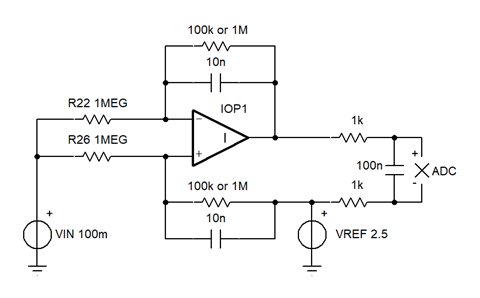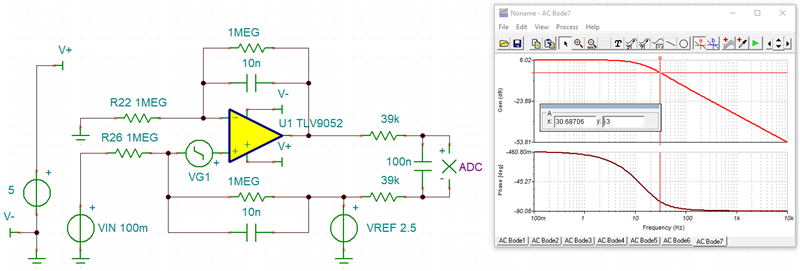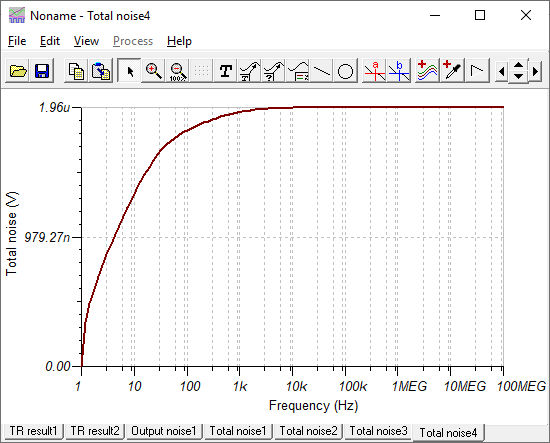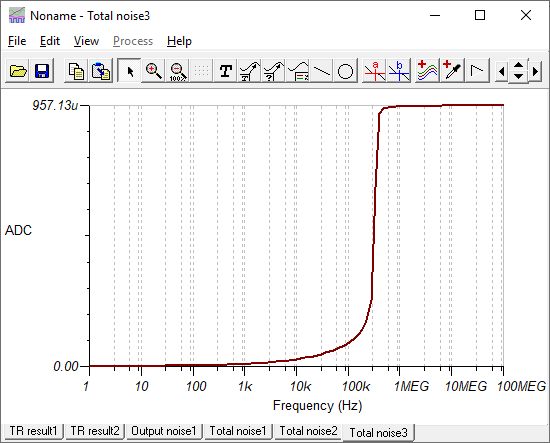Other Parts Discussed in Thread: TLV4314, OPA4314, REF3325
Dear Sir,
refer to attached file, it is my circuit for the front end of ADC.
I have request PTLV9054 and TLV9054 samples for this front end circuit. Please refer to attached picture for these 2 OPA.
test condition: CH0+-=100mV, ADC is calibrated by ADCMT 6156.
test result:
1. PTLV9054: ADC read 9999~10001. and the result is stable
2. TLV9054: ADC read 9995~10005. and the result is not stable.










